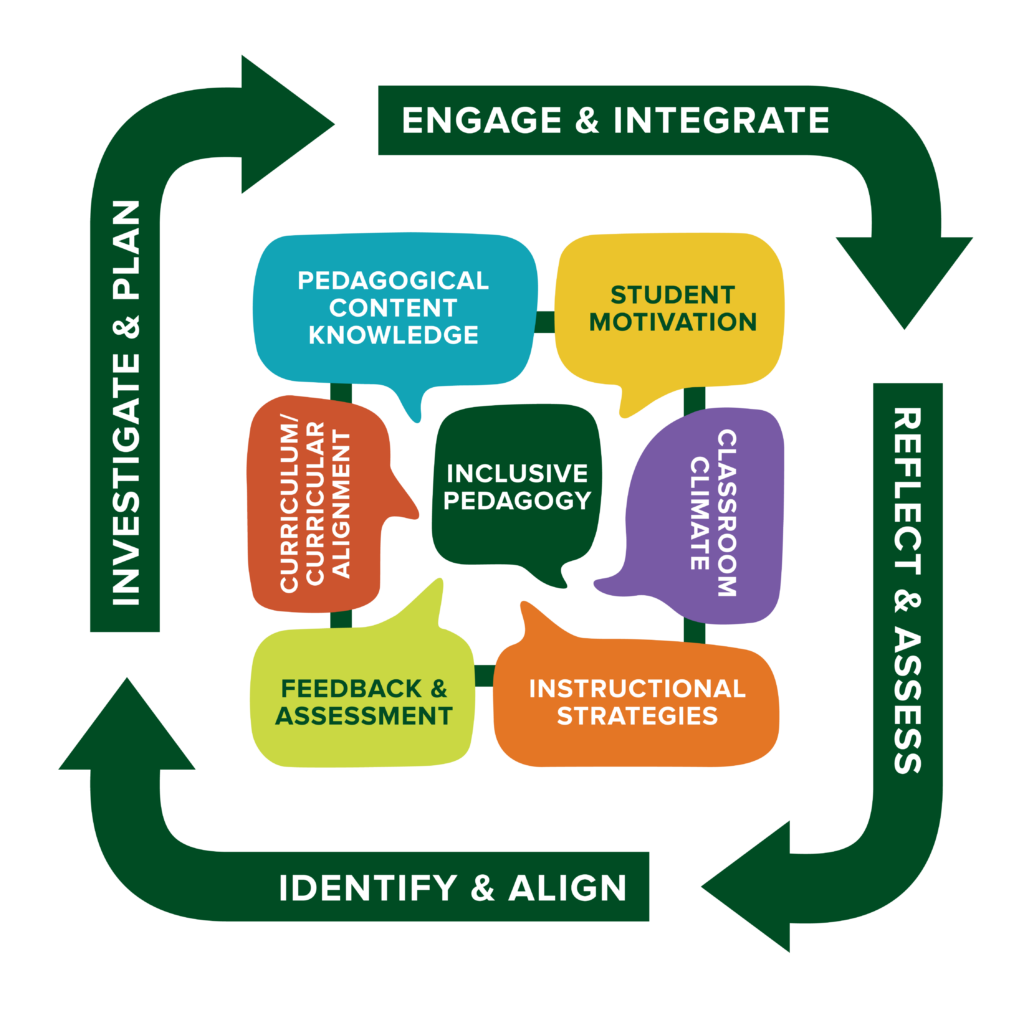Classroom Climate
Creating an Inclusive Classroom
Inclusivity in your pedagogy is grounded in culturally responsive teaching. It honors and respects all individuals in the classroom and recognizes we all can learn from each other (including you, the instructor, who can learn from your students). Inclusive pedagogy embraces cultural differences, constructs welcoming environments for sharing cultural perspectives, and assigns writing that challenge students to think critically about diversity and equity issues. Inclusive pedagogy supports ALL learners.
First, examine your beliefs about how students learn and achieve. Consider your beliefs about the purpose of your instruction and what students can or do contribute to the life of the classroom. Inclusive pedagogy is contrary to the banking model (Freire, 1970) of education, in which instructors deposit information into students while students passively accept what is said and then regurgitate it. Instead, inclusive pedagogy draws on Freire’s (1970) view of knowledge as co-constructed by students, in active exchanges with peers and instructors. In such exchanges, learning deepens for everyone, including the instructor, who may gain insights into a range of topics, from barriers to students’ understanding of the subject matter to systemic inequities that affect students’ learning.
To create an inclusive classroom, take the following steps:
- Create a welcoming and Inclusive environment (See Classroom Climate domain)
- Help students learn how to communicate equitably and productively with each other
- Provide opportunities for students to work with others – and for students to see the value of diverse perspective
Additional Considerations for Teaching Online
While most of the information on teaching effectiveness pertains to both RI and online classrooms, following are a few key points for online courses.
An important inclusive teaching practice to exercise in your online courses is building a community of learners. Following are a few ways you can do this:
- Participate in the discussion forums, and let students know what type of participation to expect from you. For example, will you respond throughout a module? Will you post only a summary at the end of each module?
- Share ideas, life experiences, critical reflections and personal perspectives to connect to real-world examples. Encourage students to do the same.
- Provide feedback that will help your students improve.
- Ask students to discuss concepts or complete assignments in groups.
- Create an emotionally and intellectually safe classroom environment.
- The nature of the online classroom makes it easy for participants to misread comments or take them out of context. It is the instructor’s responsibility to set up students for success by defining clear guidelines and modeling the communication style and etiquette expected for communications and discussion forums.
- Be clear about the consequences for failure to show respect for classmates and you, the instructor.
- Ask your students to participate in creating class norms to increase their “buy in.”
- Remember that cultural norms can influence how students interact with one another.
- Consider adapting an awareness activity from the Critical Multicultural Pavilion for your online classroom.


